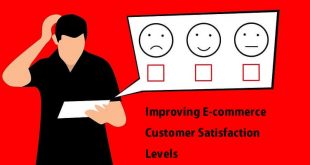The rise of decentralized technology has led to the development of new and innovative business models. One of the areas that have seen significant growth in e-commerce. By leveraging the power of blockchain and decentralized systems, web3 shopping websites offer increased security, transparency, and control for both buyers and sellers. In this article, we’ll explore the benefits of web3 shopping websites, the steps to building one, and the challenges and best practices involved.
The Benefits of Web3 Shopping Websites
One of the key benefits of web3 shopping websites is the improved security. By using decentralized systems, the risk of data breaches, hacking, and other security threats is greatly reduced. This means that personal and financial information is protected, providing peace of mind for both buyers and sellers. Additionally, web3 shopping websites allow for increased transparency and control through the use of smart contracts. These self-executing contracts ensure that transactions are executed automatically, without the need for intermediaries.
Another benefit of web3 shopping websites is that they offer lower transaction fees. With traditional e-commerce platforms, transaction fees can be quite high, eating into the profits of both buyers and sellers. On the other hand, web3 shopping websites eliminate the need for intermediaries, which means lower fees for everyone. Furthermore, web3 shopping websites offer a more user-friendly experience. With decentralized systems, users are in complete control of their data and funds, providing a more streamlined and efficient experience.
Steps to Building a Web3 Shopping Website
Building a web3 shopping website requires a deep understanding of the technical aspects of web3 technology. Firstly, you’ll need to choose the right platform and tools for development. There are several web3 platforms available, including Ethereum, Binance Smart Chain, and Polygon, each with its own set of features and benefits. Once you’ve selected the platform, you’ll need to design and develop the front-end and user interface. This includes creating a user-friendly interface, designing product pages, and integrating payment systems.
Next, you’ll need to integrate smart contracts into your web3 shopping website. These contracts are essential for ensuring the security and transparency of transactions. Additionally, you’ll need to implement payment systems that support web3 technology. There are several options available, including crypto wallets, payment gateways, and decentralized exchanges. Finally, once the site is up and running, you’ll need to launch and promote it. This includes marketing and advertising, building a community of users, and encouraging engagement and feedback.
Challenges and Best Practices for Web3 E-commerce Development
While building a web3 shopping website can bring numerous benefits, there are also several challenges that need to be overcome. One of the biggest challenges is the technical and implementation hurdles involved. Building a decentralized e-commerce platform requires a deep understanding of web3 technology, as well as experience with blockchain and smart contracts. Another challenge is ensuring that the site is user-friendly and accessible. With decentralized systems, users may be less familiar with the technology, so it’s important to ensure that the site is easy to navigate and use.
In addition to these challenges, web3 e-commerce development also requires adherence to regulatory compliance and security best practices. This includes ensuring that the site is secure, that transactions are transparent, and that users’ personal and financial information is protected. Finally, building a strong and engaged community of users is essential for the success of your web3 shopping website. Encouraging engagement, providing excellent customer service, and building a sense of trust and loyalty with your users will help to build a thriving and successful e-commerce platform.
To succeed in web3 e-commerce development, it’s important to have a deep understanding of web3 technology and blockchain, as well as experience with smart contracts and payment systems. Additionally, it’s crucial to ensure that the site is user-friendly, secure, and compliant with regulatory requirements. Finally, building a strong and engaged community of users is key to the success of any web3 shopping website. With these considerations in mind, the potential for web3 shopping websites to revolutionize the e-commerce industry is immense.
One important aspect of web3 shopping website development is the implementation of smart contracts. In the context of e-commerce, smart contracts can be used to automate processes such as the transfer of funds, product delivery, and dispute resolution. This not only makes the transactions more secure and transparent but also eliminates the need for intermediaries, reducing costs and increasing efficiency.
Another important aspect of web3 shopping website development is the use of decentralized finance (DeFi) solutions. DeFi refers to the use of decentralized protocols and infrastructure to provide financial services that were previously only available through centralized intermediaries. For example, DeFi can be used to provide loans, insurance, and stablecoins; allowing users to manage their finances in a more secure and decentralized manner.
In addition to smart contracts and DeFi, web3 shopping website development can also benefit from the use of non-fungible tokens (NFTs). NFTs are unique digital assets that can represent anything from collectible items, such as art or music, to virtual real estate. NFTs are particularly relevant in the context of e-commerce; as they allow for the creation of unique and verifiable digital products that cannot be replicated or duplicated.
To ensure the success of a web3 shopping website, it is also important to consider user experience and accessibility. Web3 technology is still relatively new and can be difficult for non-technical users to understand and use. It is important to design the website in a user-friendly manner; making sure that users can easily navigate the site and understand how to use it. Additionally, the website should be optimized for mobile devices; as more and more users are accessing the internet from their smartphones.
Another important aspect of web3 shopping website development is regulatory compliance. The use of blockchain and decentralized solutions in e-commerce raises a number of legal and regulatory questions. It is important to be aware of the legal and regulatory environment in which the website will operate and ensure that the website is compliant with all relevant laws and regulations.
Finally, building a strong and engaged community of users is key to the success of any web3 shopping website. Community building is crucial for attracting and retaining users, as well as for creating a sense of trust and loyalty. There are a number of strategies for building a strong community; such as offering incentives and rewards for participation, fostering a sense of community through forums and chat groups, and creating engaging and informative content.
In Conclusion
Web3 shopping website development is a complex and dynamic field that requires a deep understanding of web3 technology, blockchain, and decentralized finance, as well as a focus on user experience, accessibility, regulatory compliance, and community building. However, with the right approach and attention to detail; web3 shopping websites have the potential to revolutionize the e-commerce industry and create a new era of secure, transparent, and efficient e-commerce transactions.
 Free Web Resources , psd, mockups, & web templates Best WordPress Themes & Best Html Templates
Free Web Resources , psd, mockups, & web templates Best WordPress Themes & Best Html Templates





